Running out of room to grow? The solution might be right above your head. These 19 space-saving plants are perfect for vertical gardening, turning bare walls, fences, and trellises into lush, productive green zones. Whether you’re working with a small balcony, a narrow side yard, or a crowded urban garden, vertical growing lets you do more with less.
From climbing vegetables like beans, cucumbers, and squash, to elegant flowering vines and compact herb towers, every plant on this list is a natural climber—or can easily be trained to go up instead of out. Vertical planting not only saves ground space, but also helps improve air circulation, reduces pests, and makes harvesting easier.
Plus, growing vertically can double as a design element, creating living walls that look as good as they taste. If you’re ready to rethink your planting strategy, these vertical growers will help you maximize yields, minimize clutter, and totally transform your space.
Tomatoes
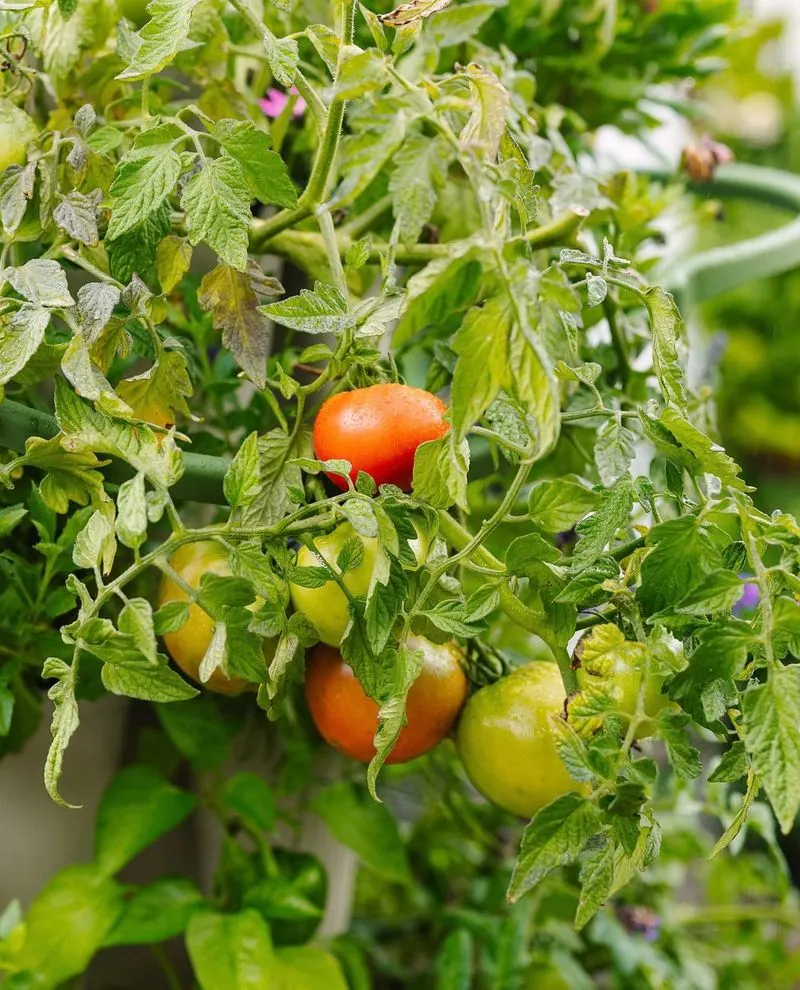
Tomatoes are a favorite for vertical gardening due to their climbing nature. With the right support, these vibrant plants can reach impressive heights, offering a bountiful harvest. Use sturdy cages or trellises to guide their growth upwards. Not only do they save ground space, but they also thrive when exposed to sunlight from all directions. A classic ingredient in many dishes, tomatoes provide both beauty and utility to your vertical garden. Whether you’re growing cherry tomatoes or larger varieties, vertical gardening helps optimize space and yield.
Cucumbers
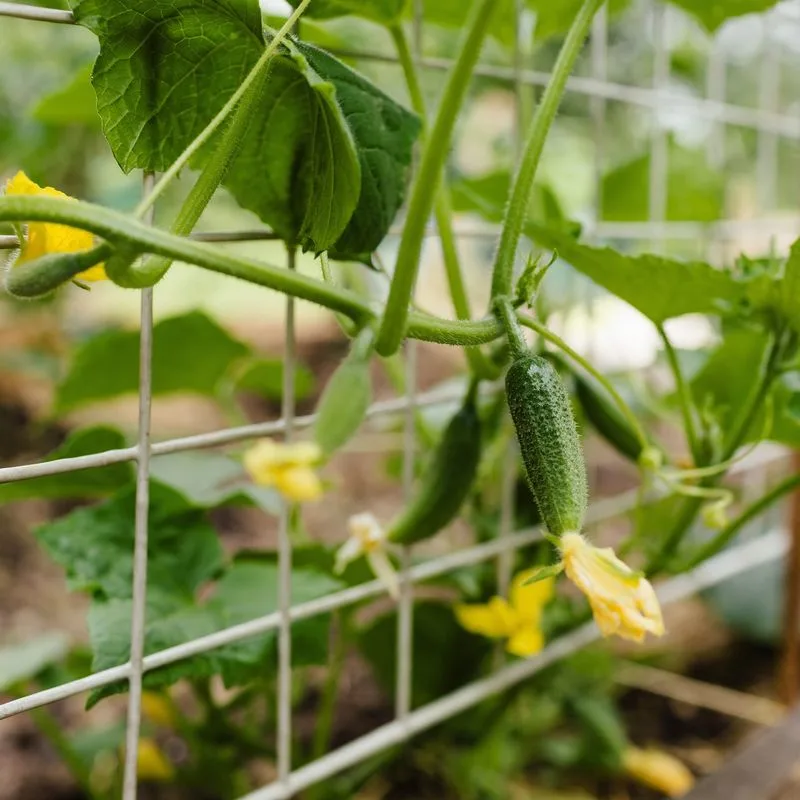
Cucumbers are natural climbers, making them ideal for vertical gardens. With their tendrils reaching out for support, they eagerly embrace trellises and stakes. This upward growth allows for better air circulation and easier harvesting. As they climb, the vines produce an abundance of cucumbers that hang elegantly. Vertical gardening minimizes ground clutter and maximizes space efficiency. Perfect for pickling or fresh salads, cucumbers grown vertically are both practical and visually appealing.
Beans
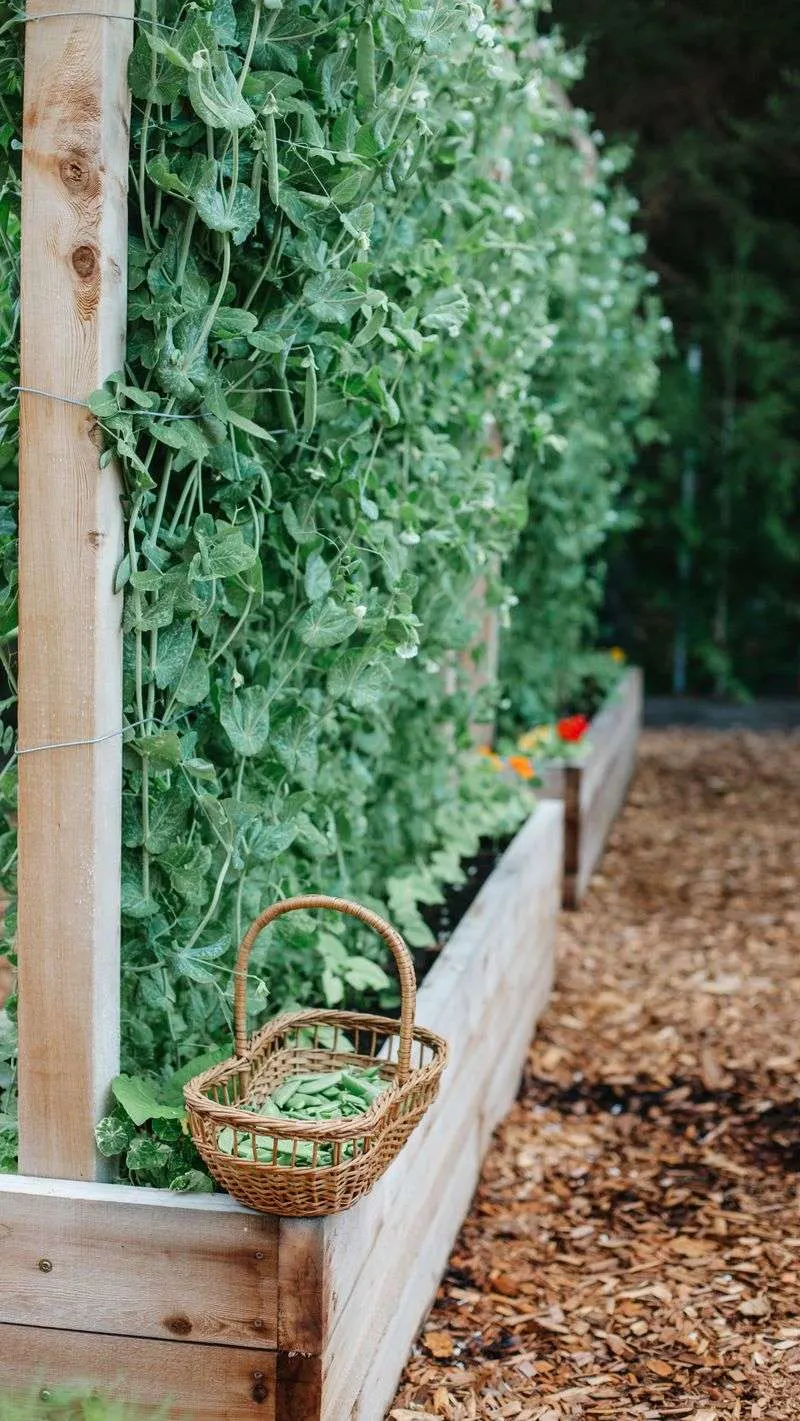
Beans are quintessential climbers, thriving in vertical settings. Whether it’s pole beans or runner beans, their upward reach is impressive. By providing them with poles or a trellis, you encourage robust growth. This method not only saves space but also makes harvesting a breeze. The vertical setup ensures a healthier plant by reducing ground contact, thus minimizing pests and diseases. Beans add both nutrition and aesthetic appeal to your garden, making them a versatile choice for vertical gardening.
Peas
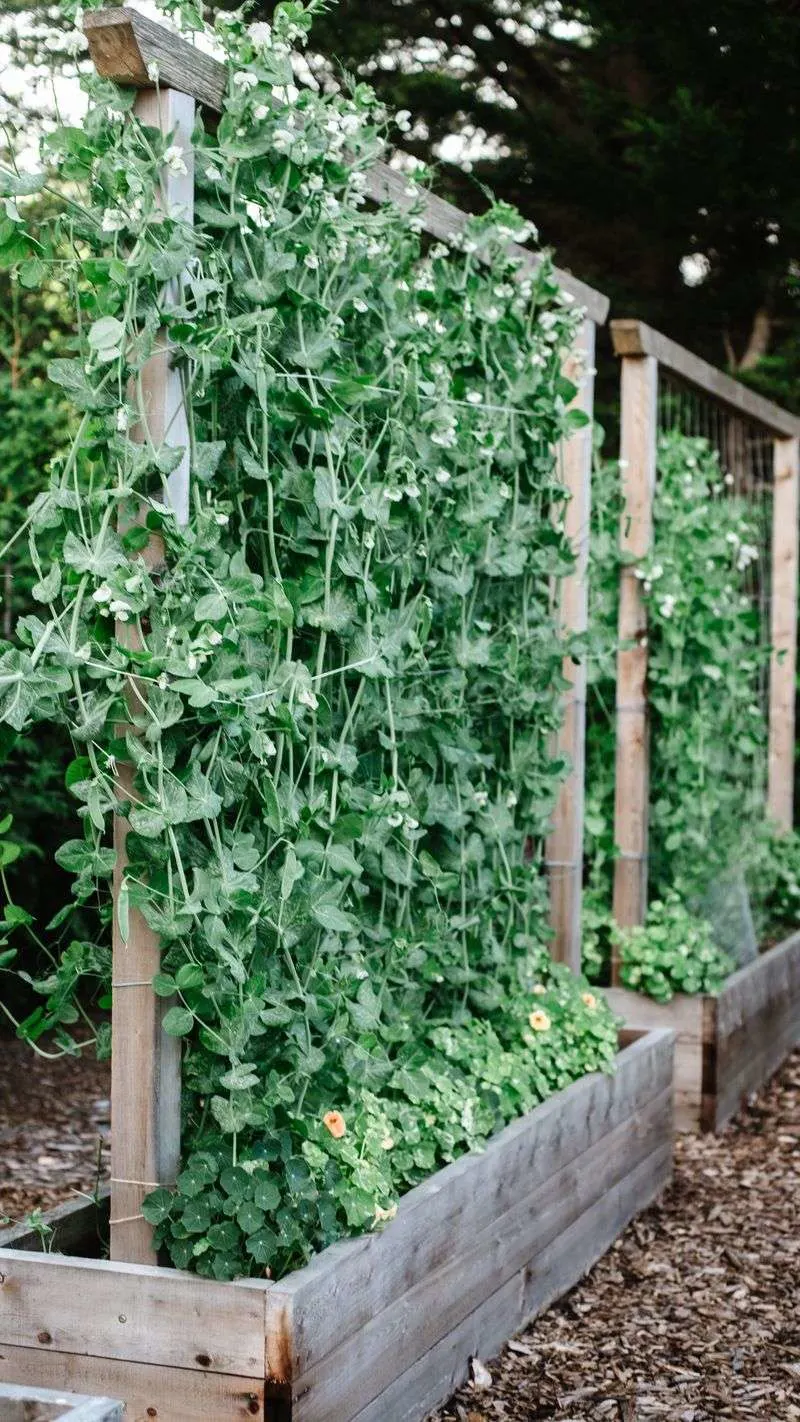
Peas are a delightful addition to any vertical garden. Their slender stems and tendrils are perfect for climbing trellises. As they ascend, they produce sweet pods that are easy to pick. Vertical gardening keeps peas off the ground, reducing rot and pest issues. The fresh, sweet taste of homegrown peas is unmatched, and their presence adds a touch of greenery and charm. Peas are not only delicious but also enrich the soil with nitrogen, benefiting neighboring plants.
Squash
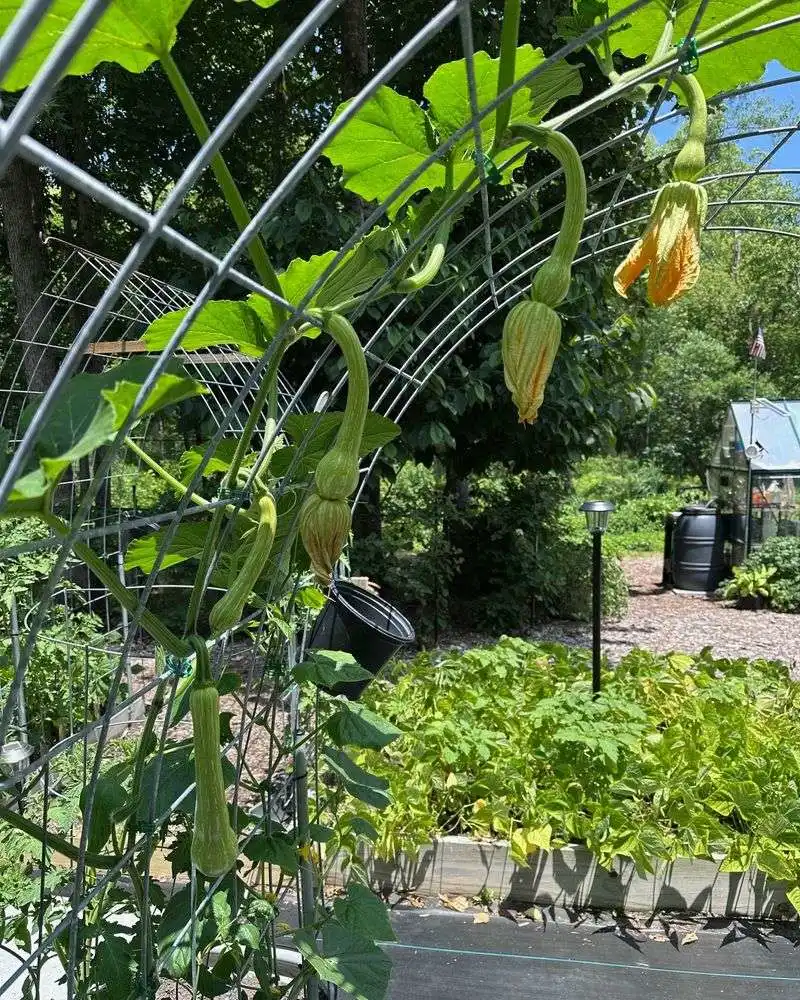
Squash might seem unconventional for vertical gardening, but they adapt well with support. Training squash vines upwards can save significant garden space. Use strong trellises or arbors to support their weight. Vertical growth also improves air circulation, reducing the risk of mildew. The large leaves create an attractive canopy while the vibrant fruits hang below. Squash adds diversity and volume to your vertical garden, providing both ornamental and edible value.
Pumpkins
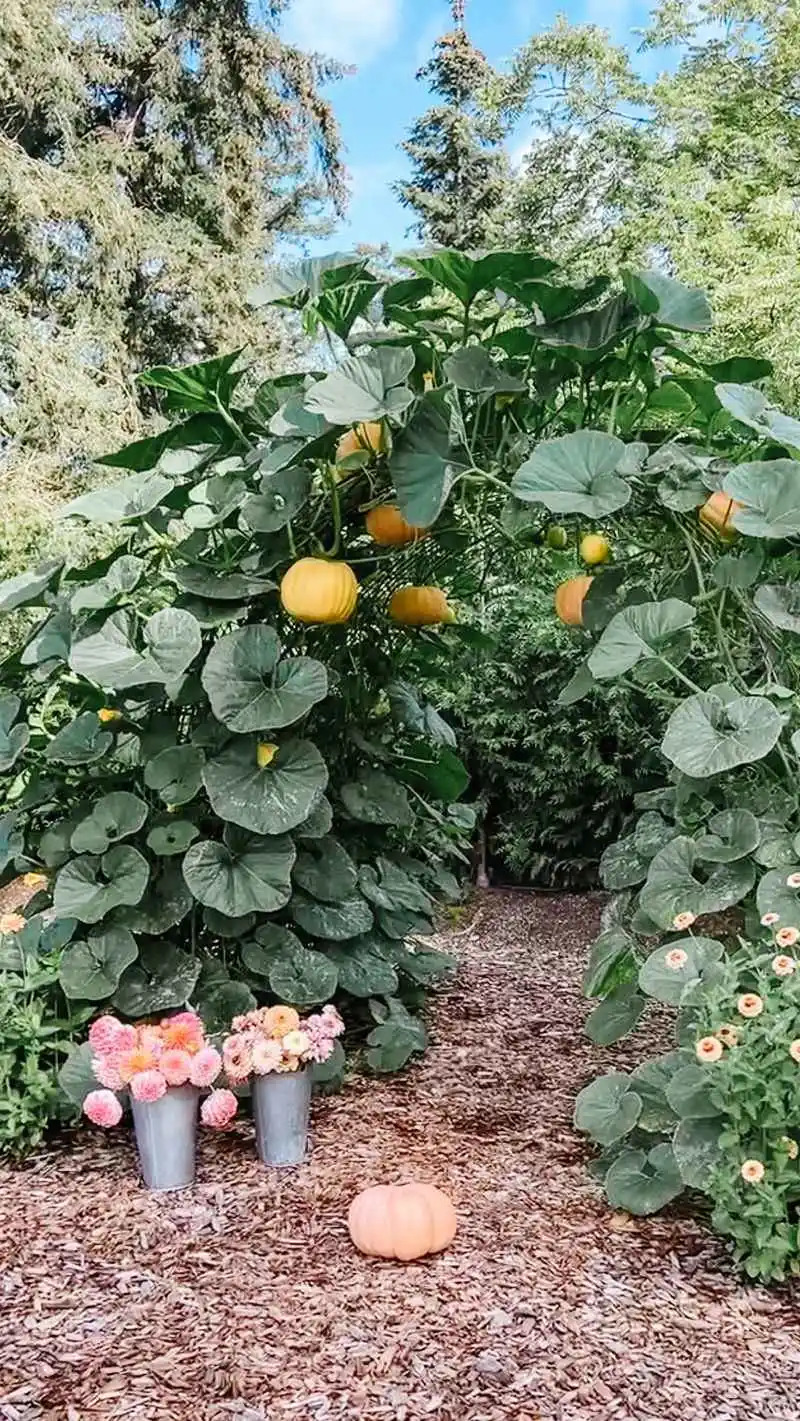
Though heavy, pumpkins can be grown vertically with the right support. Using strong trellises and slings to cradle the fruit, vertical pumpkin growing saves ground space and adds a whimsical element to gardens. The leaves form a lush backdrop as the pumpkins dangle visibly. This method not only conserves space but also enhances air flow and reduces soil contact, preventing rot. Pumpkins grown vertically are both a conversation starter and a festive addition to any garden.
Zucchini
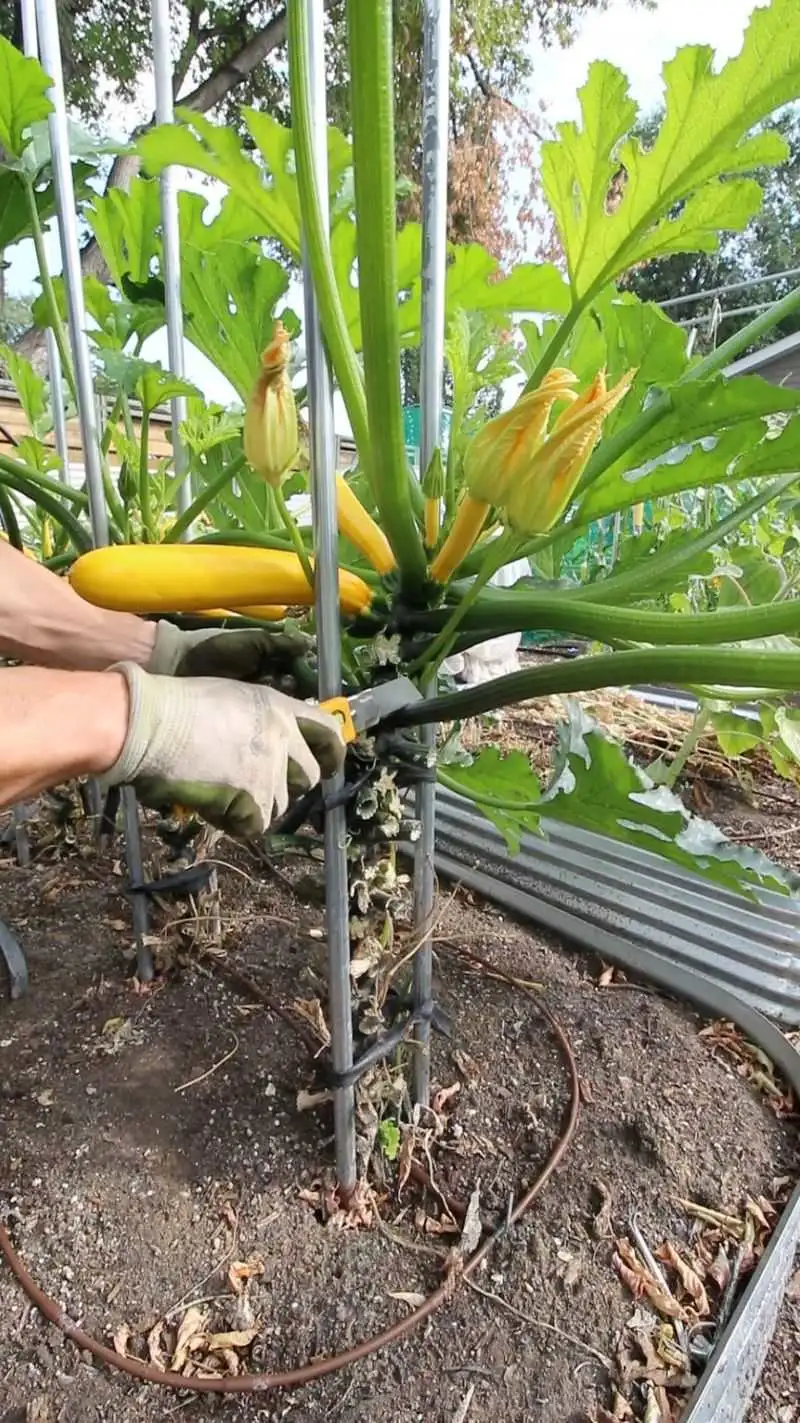
Like their squash cousins, zucchinis can also be trained to grow vertically. This method helps save space while keeping the fruits clean and accessible. By using a trellis, you promote better air circulation, reducing the chance of fungal diseases. The large leaves provide shade while the zucchinis hang neatly. Vertical growth not only optimizes space but also makes harvesting easier. Zucchinis are versatile in cooking, making them a valuable addition to your garden.
Melons
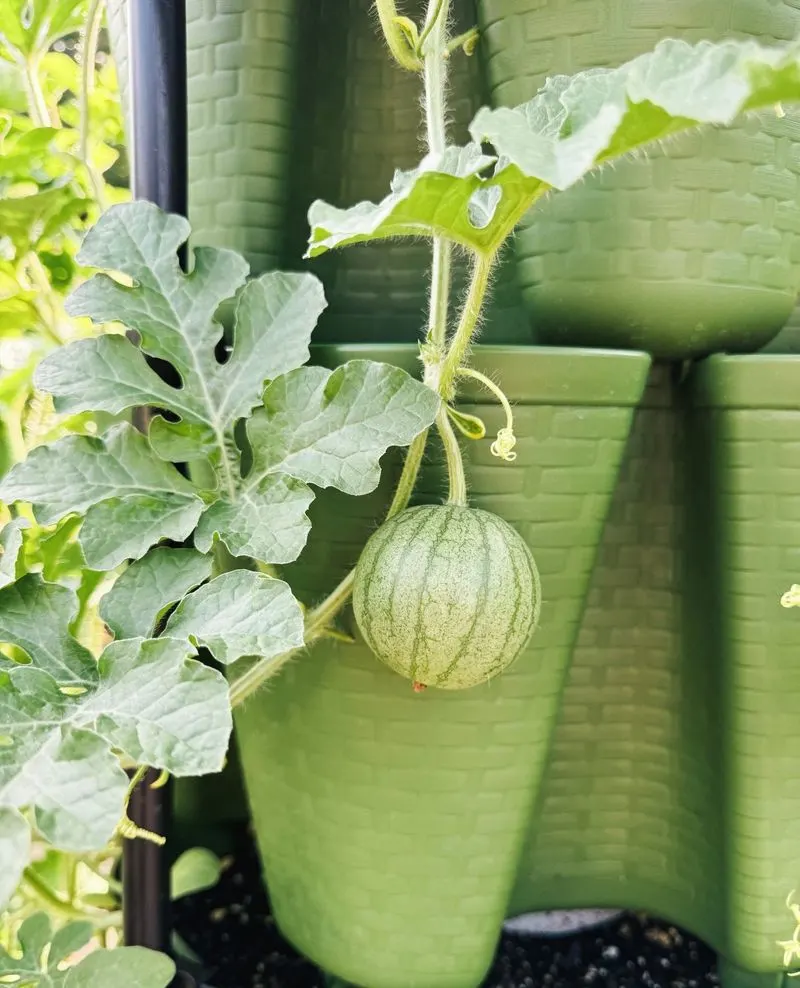
Melons, although weighty, can thrive in vertical gardens with proper support. Using slings or nets to cradle the fruit, melons can grow vertically, saving valuable ground space. This method improves air circulation and sunlight exposure, leading to healthier plants. The sight of melons hanging on a trellis is both unusual and captivating. Vertical gardening for melons not only conserves space but also enhances fruit quality by reducing soil contact.
Lettuce
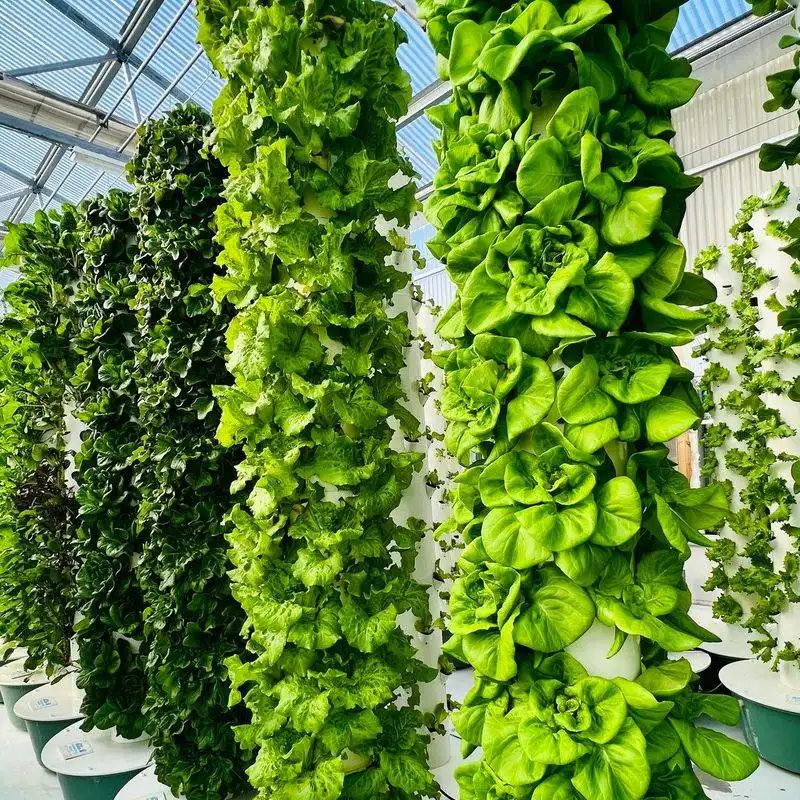
Lettuce is perfect for vertical wall gardens, offering a continuous harvest of fresh greens. With various colors and textures, lettuce adds visual interest. Growing lettuce vertically saves space and allows for easy access. The shallow root system makes it well-suited for vertical planters. This method is ideal for small spaces or urban environments where ground space is limited. Lettuce in a vertical setup is not only practical but also adds a touch of greenery to any space.
Strawberries
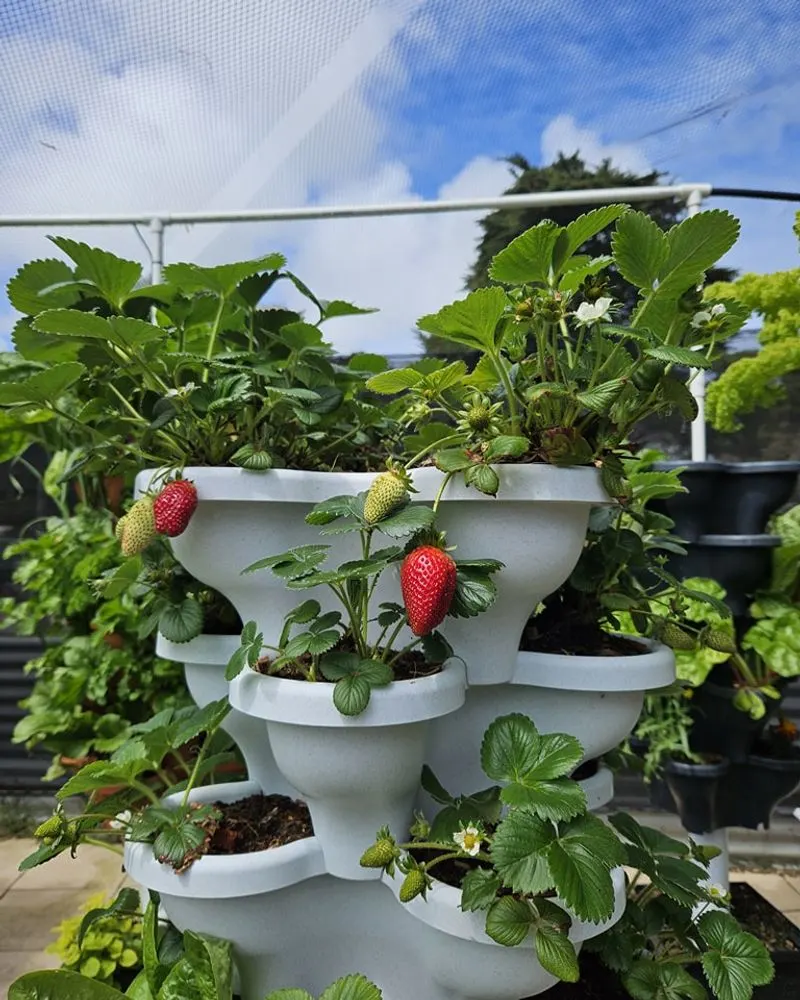
Strawberries are a delightful choice for vertical gardening. Their compact nature and shallow roots make them perfect for vertical setups. Hanging planters or tiered systems work well, allowing strawberries to cascade down. This method maximizes space and keeps the fruit clean and off the ground. The sight of ripe strawberries hanging is as tempting as it is beautiful. Vertical gardening with strawberries ensures a fruitful harvest with minimal space requirements.
Herbs
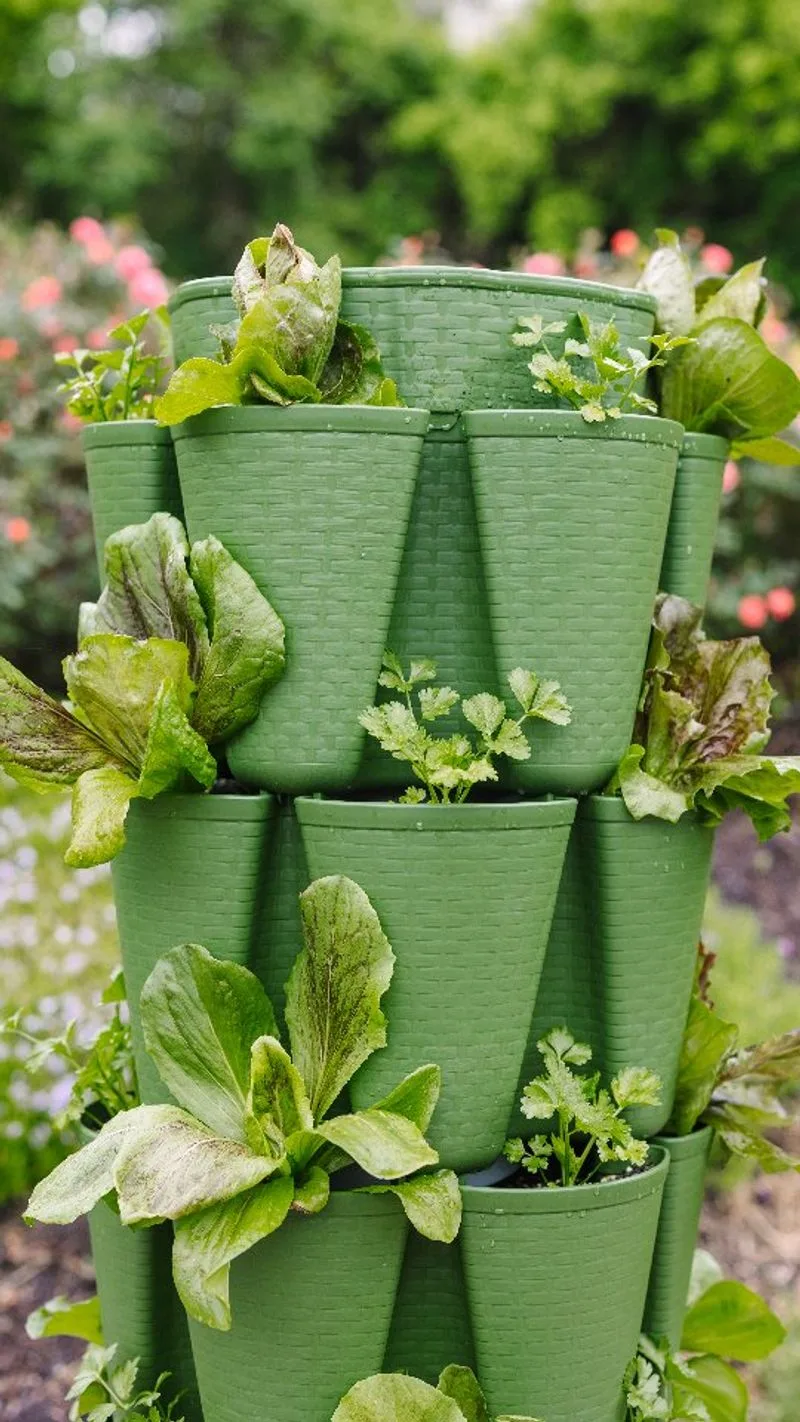
Herbs thrive in vertical gardens, providing fresh flavors right at your fingertips. With a variety of herbs like basil, thyme, and mint, a vertical setup can transform a kitchen wall into a fragrant oasis. This method saves counter space and adds culinary value. The ease of access makes it convenient for cooking, while the lush greenery enhances any indoor setting. Vertical herb gardens are both functional and decorative, perfect for culinary enthusiasts.
Spinach
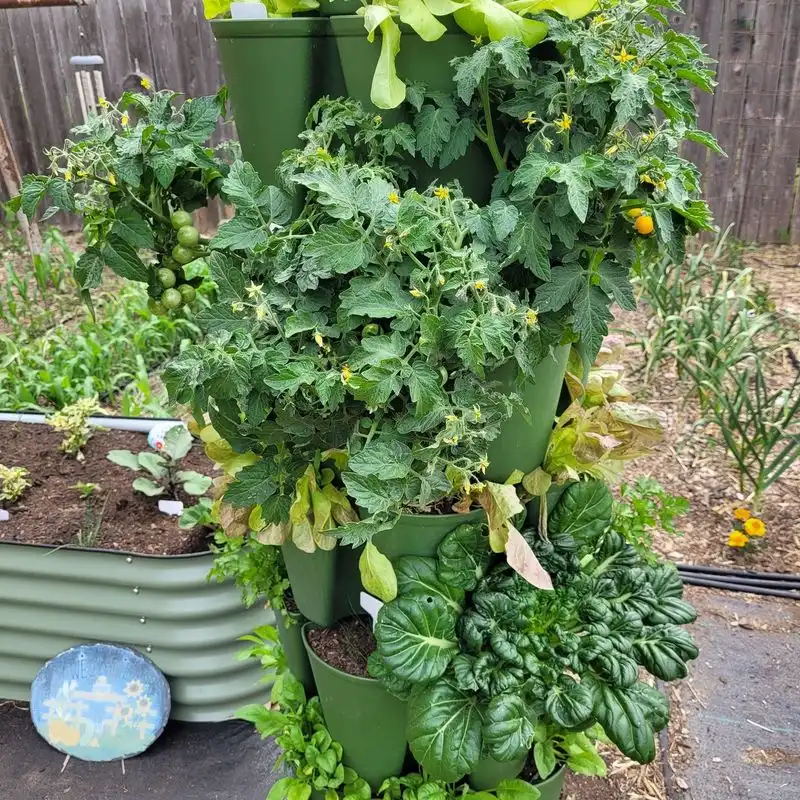
Spinach is well-suited for vertical gardening, offering nutritious leaves in a compact form. Growing spinach vertically saves space and simplifies harvesting. The leaves are easily accessible and remain clean, free from soil contact. Vertical setups encourage better air circulation, promoting healthy growth. Spinach is versatile in the kitchen, making it a valuable addition to any garden. Its rich green foliage adds a vibrant touch to vertical planters, enhancing garden aesthetics.
Bell Peppers
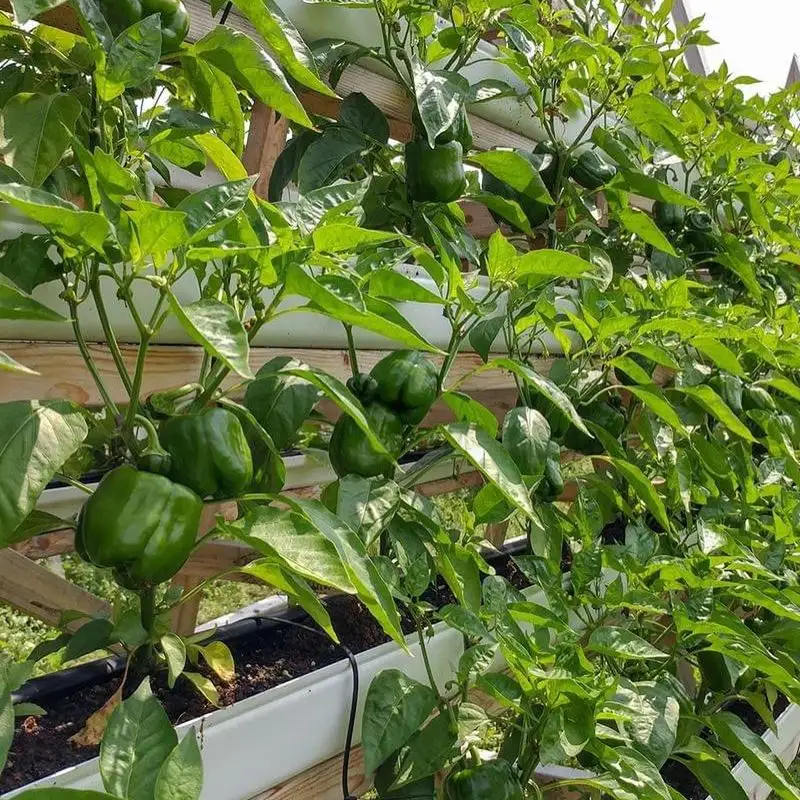
Bell peppers bring color and flavor to vertical gardens. These upright plants benefit from vertical growth, using cages or stakes for support. This method saves space and enhances sunlight exposure. The vibrant peppers hang in an array of colors, adding visual interest. Vertical gardening with bell peppers ensures a bountiful harvest with minimal ground space. Their sweet taste and crunchy texture make them a popular choice for home gardeners.
Raspberries
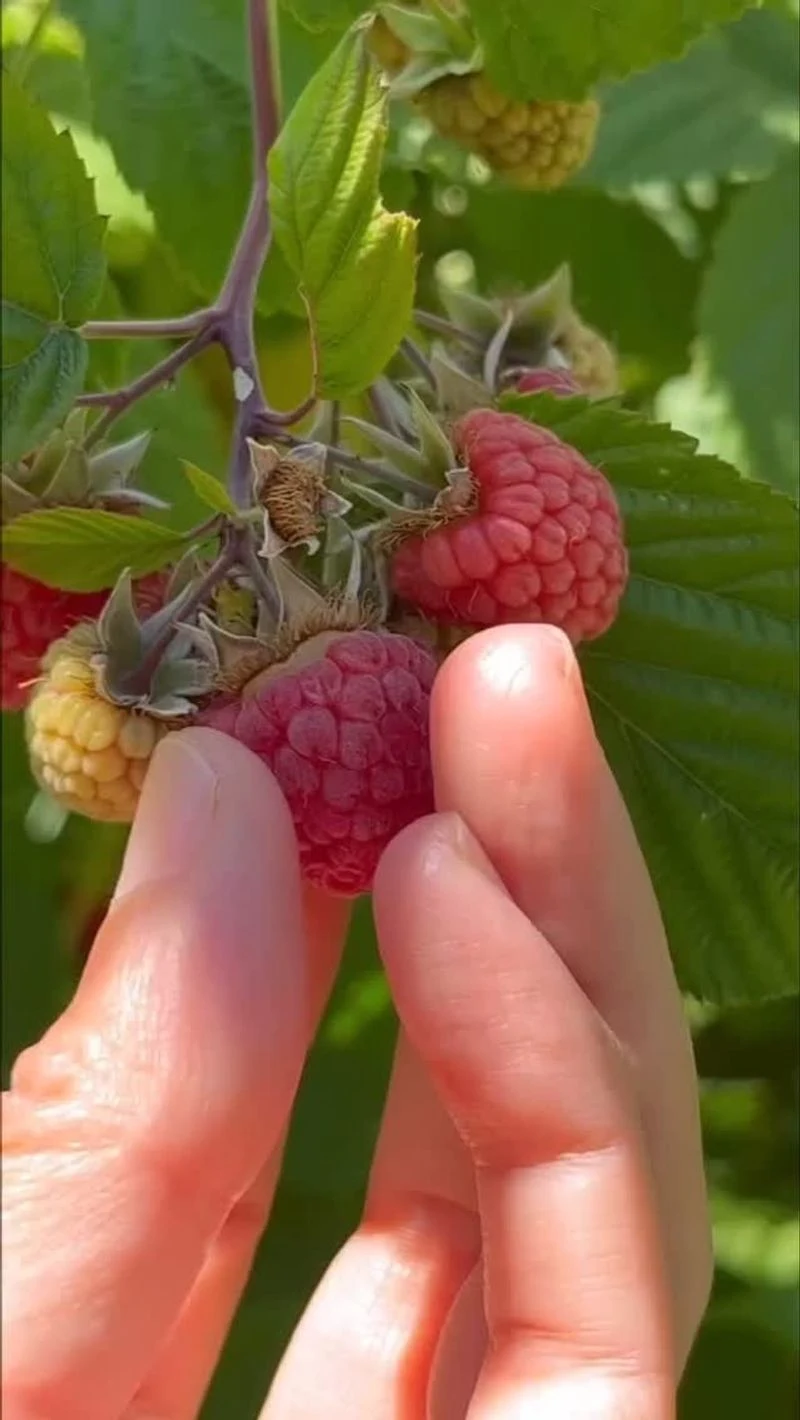
Raspberries flourish in vertical settings. Their canes can be trained on trellises, saving space and making harvesting easier. Vertical growth improves air circulation, reducing disease risk. The sight of ripe raspberries against green foliage is both charming and appetizing. Vertical gardening with raspberries ensures a plentiful harvest with minimal space. These sweet berries add both ornamental and culinary value to any garden, making them a delightful choice.
Grapes
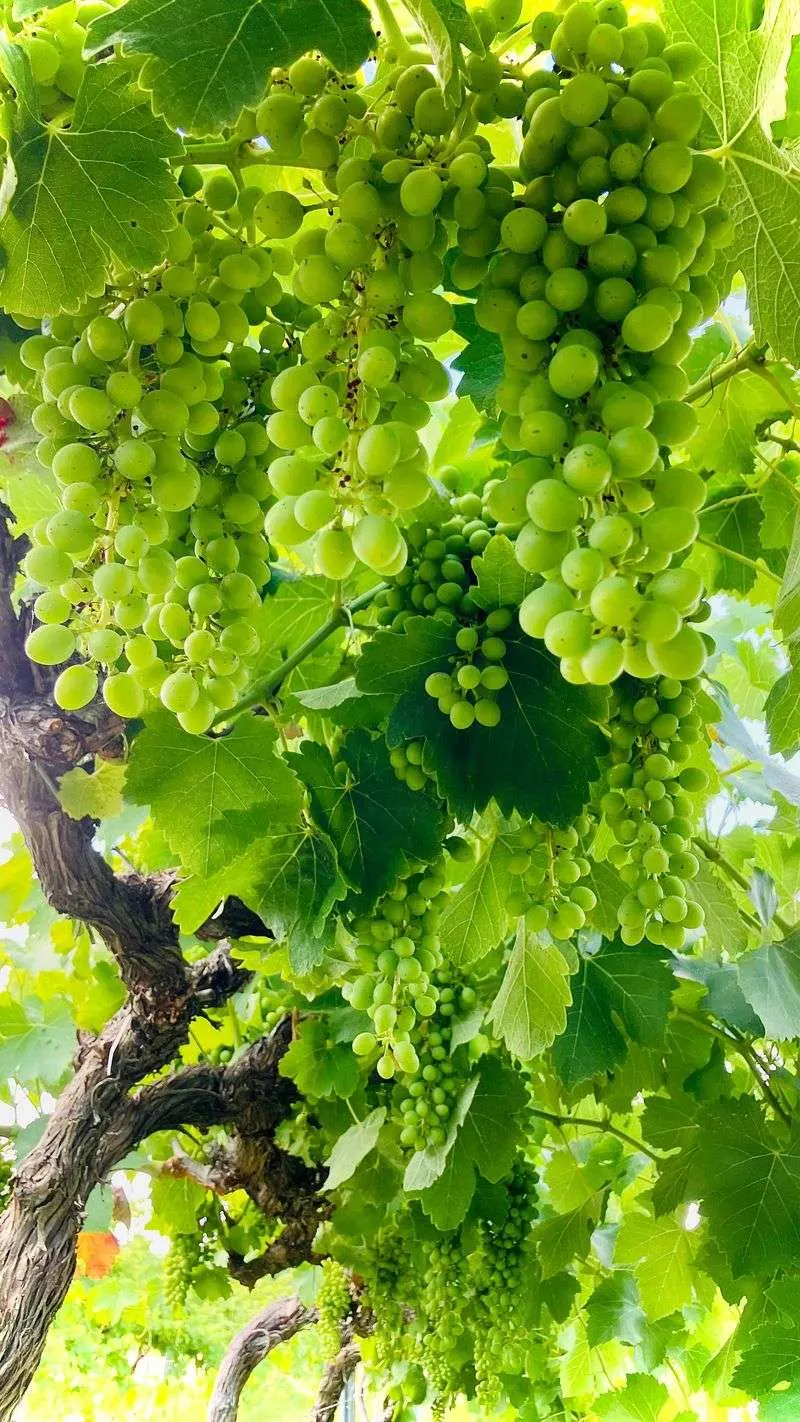
Grapes are naturally inclined to climb, making them ideal for vertical gardening. By training grapevines on trellises, you maximize space and enhance fruit production. This method improves air circulation and sunlight exposure, leading to healthier vines. The sight of clusters of grapes hanging is picturesque and inviting. Vertical gardening with grapes not only conserves ground space but also adds a touch of elegance to any garden setting.
Passionfruit
Passionfruit vines are perfect for vertical gardening. Their vigorous growth requires sturdy support, such as trellises or fences. This method saves space and provides abundant sunlight. The vines produce beautiful flowers and exotic fruits, adding charm to any garden. Vertical gardening with passionfruit enhances air circulation and reduces ground clutter. The sweet and tangy fruits are a tropical delight, making passionfruit a captivating choice for vertical setups.
Ivy
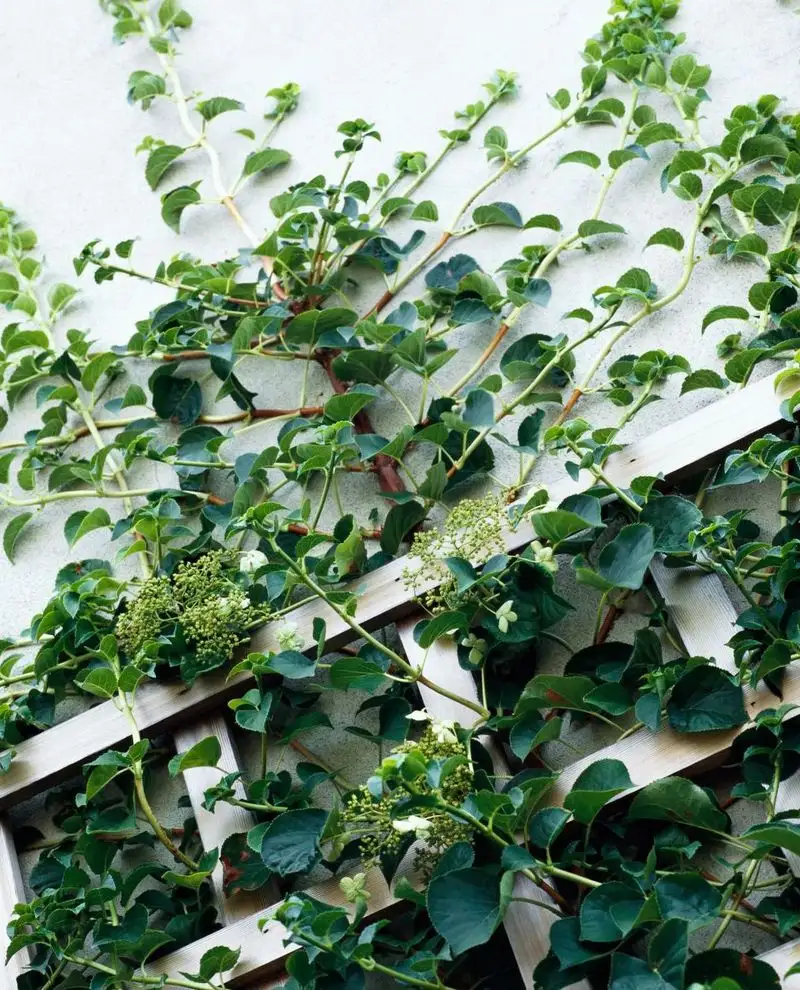
Ivy is a versatile plant for creating vertical green walls. With its fast-growing nature, ivy can cover large areas, adding greenery to urban facades. Vertical growth saves space and creates a natural, cooling effect. Ivy walls are low-maintenance and can thrive in various conditions. They provide a lush backdrop and enhance aesthetic appeal. Whether indoors or outdoors, ivy adds a touch of nature to any space, making it a popular choice for vertical gardening.
Jasmine
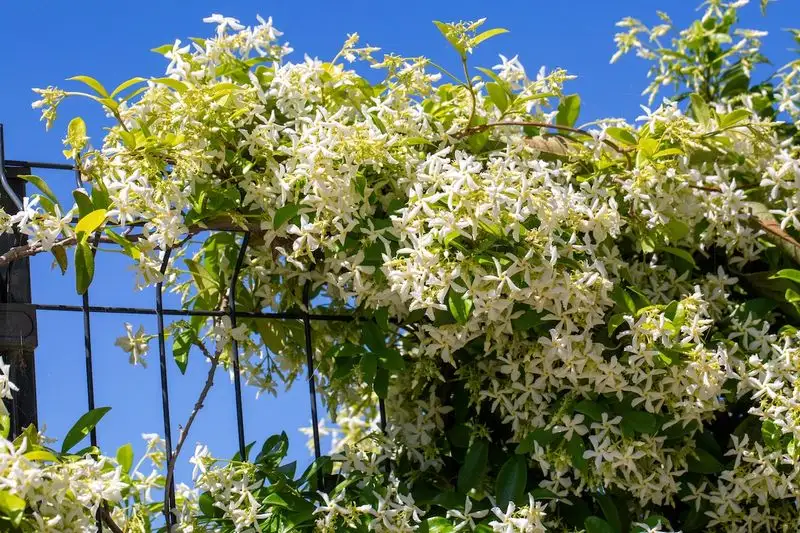
Jasmine vines add fragrance and beauty to vertical gardens. Their climbing nature makes them ideal for trellises or pergolas. As they ascend, they produce clusters of white flowers with a sweet aroma. Vertical growth maximizes space and enhances air circulation. Jasmine adds a romantic touch to gardens, making evenings more enchanting. With its captivating scent and elegant appearance, jasmine is a delightful addition to any vertical garden.
Morning Glory
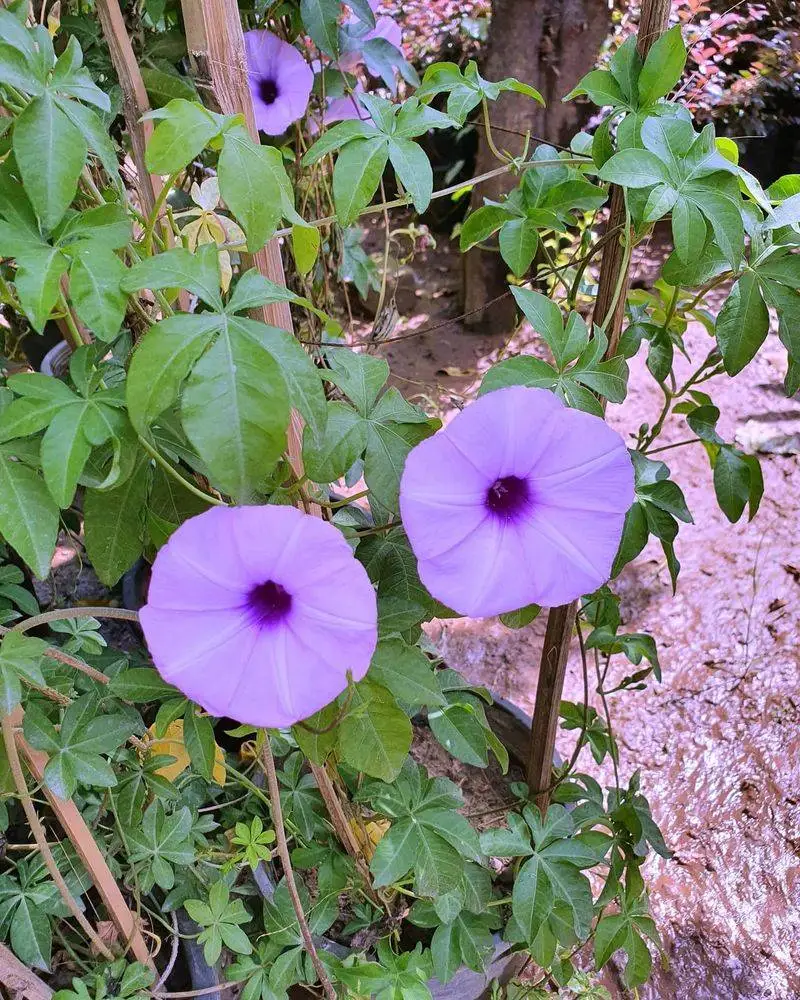
Morning glory is famous for its vibrant flowers and rapid growth, making it a favorite for vertical gardening. These vines climb eagerly, covering trellises with colorful blooms. The flowers open in the morning, creating a beautiful spectacle. Vertical growth saves space and adds visual interest. Morning glory is low-maintenance and can adapt to various conditions. Its cheerful flowers bring life to any garden, making it an attractive choice for vertical setups.

